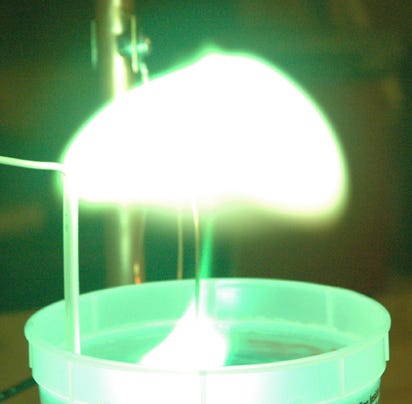Chinese scientists have recorded the rare phenomenon in nature for the first time
For centuries, people have reported seeing luminous, spherical orbs during storms — a phenomenon known as “ball lightning”. According to eyewitness reports they last for several seconds, moving through the air before eventually exploding.
But meteorologists have always regarded such reports with suspicion, as they’d never been able to observe the phenomenon themselves. Inconsistencies in public reports led those studying these cases starting to think of them like UFO sightings — merely hallucinations, perhaps caused by electromagnetic effects.
Now, however, following years of attempts to replicate ball lightning in the lab, Chinese researchers have finally recorded it in the field.
 |
| Discharging a high-voltage capacitor in a tank of water yields a ball-like discharge. // Sfusare, CC BY-SA 3.0 |
Jianyong Cen, Ping Yuan, and Simin Xue were usingspectrographs and video cameras to observe a thunderstorm near Qinghai in China’s desolate western provinces when they saw something they weren’t expecting.
After a bolt of lightning hit the ground, a glowing ball about five metres wide rose up and travelled about 15 metres, before disappearing about 1.6 seconds later.
Stunned, the researchers packed up their kit and headed back to their lab, where they discovered that the elements in the ball were the same as those in the local soil — silicon, iron and calcium. They published their results in the journal Physical Review Letters.
Their results lend credence to a theory first laid out in 1999 by John Abrahamson, a chemist at the University of Canterbury in New Zealand.
His theory goes that when lightning strikes the ground, it immediately stores energy in silicon nanoparticles in the soil. The force of the strike then ejects those particles into the air, where they’re oxidised and release that energy as heat and light, glowing briefly.
That doesn’t explain all the situations where ball lightning has been seen — like on aircraft flying high in the sky. But Abrahamson says that his findings fit the Chinese researchers’ results nicely. “Here’s an observation which has all the hallmarks of our theory,” he told New Scientist. “This is gold dust as far as confirmation goes.”



No comments: